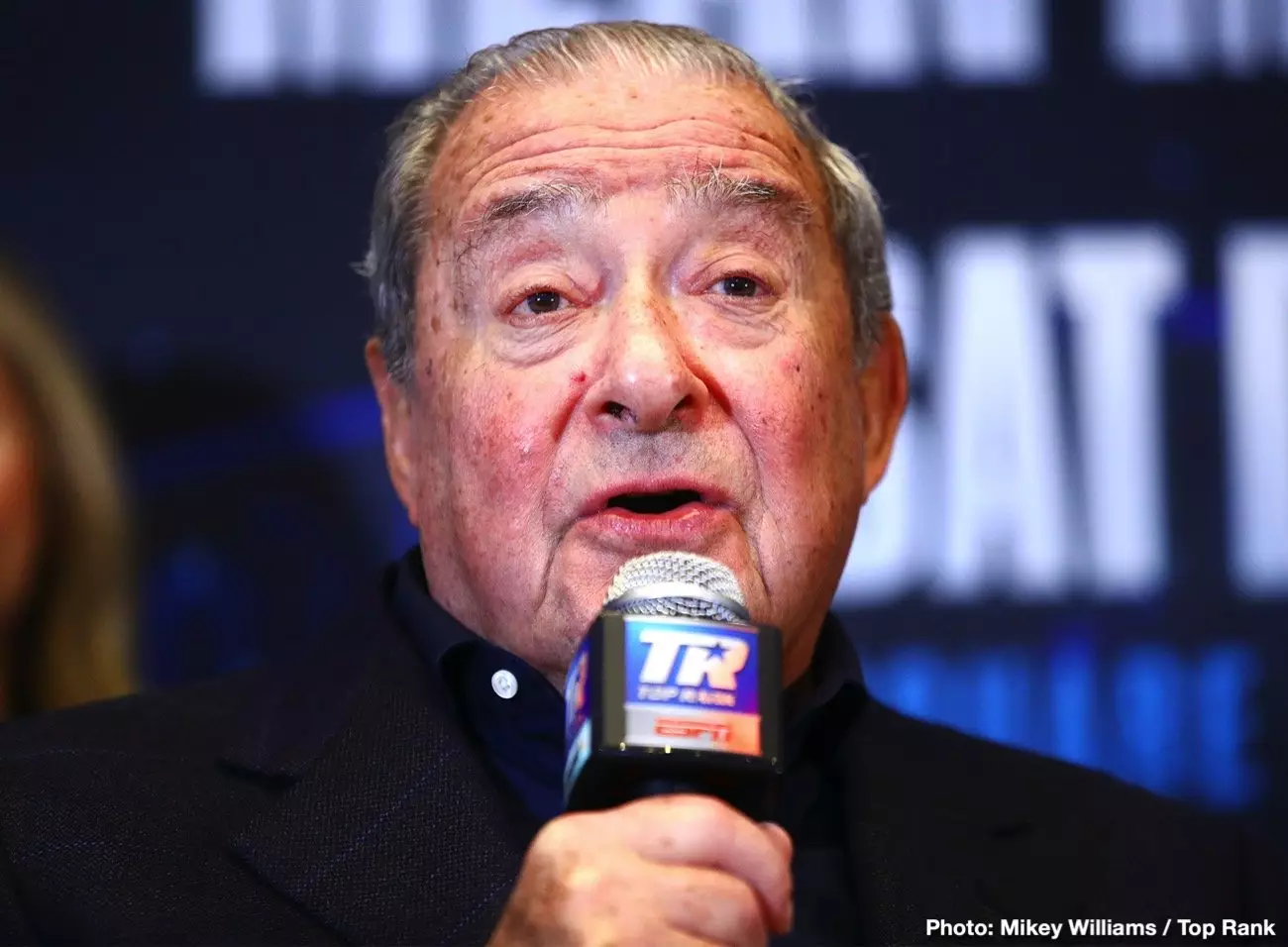In the world of professional boxing, the decisions surrounding pay-per-view (PPV) broadcasts often reflect broader trends and challenges within the sport. Recently, Top Rank’s Bob Arum expressed hesitation about featuring the upcoming fight between WBO light welterweight champion Teofimo Lopez and former IBF champion Subriel Matias on PPV. His reservations hinge not just on concerns over piracy and revenue loss, but also on the fighters’ marketability. Lopez’s past performances and Matias’s previous defeats don’t exactly spark excitement; hence, Arum’s inclination is to broadcast the fight on regular ESPN instead. This decision could represent a pivot back to traditional broadcasting for professional boxing, highlighting a significant shift in how promoters approach fight promotions.
The crux of the issue lies in the dwindling allure of PPV events that do not involve widely recognized stars or compelling matchups. Historically, major boxing events required a certain gravity, an irresistible appeal, to draw viewers willing to pay a premium. Arum’s observations reflect a shifting landscape where fighters like Lopez are struggling to cultivate a fanbase. His disappointing loss to George Kambosos Jr. epitomizes a trend where poor performances hinder a fighter’s marketability. As interest wanes, promoters face the challenging reality that these fighters may not justify the PPV price tag, leading to low sales and diminishing returns.
Arum highlights a significant, albeit often overlooked, factor in the current PPV dilemma: consumer fatigue. As audiences are inundated with options and often let down by subpar fight cards, the decision to go PPV becomes increasingly scrutinized. The cynicism surrounding PPV fights is compounded by the easily accessible alternative of watching pirated streams, creating a paradoxical situation where promotional efforts lead to diminished returns. When fans perceive fights as lackluster or unworthy of their investment, they turn to free alternatives, leading to Arum’s assertion that the numbers are artificially inflated due to piracy.
Moreover, promoters like Arum should reflect critically on their strategies in developing fighters into PPV draws. Historically, many fighters have been placed on PPV platforms prematurely, before establishing a solid fanbase or reputation, as exemplified by Gervonta Davis’s early career experiences. The rush to monetize a fighter can backfire when the audience is not yet convinced of their value as a marquee attraction. This brings up a broader issue regarding the nurturing of talent within the sport—rather than hastily pushing fighters into a premium platform, a concerted effort should be taken to build intrigue through strategic matchmaking over time.
The boxing industry stands at a crossroads. The challenge is not merely piracy but a profound misunderstanding of market dynamics and consumer behavior. By reevaluating what truly constitutes a PPV-worthy fight, promoters can implement better strategies to attract audiences and inspire interest. For a sport ripe with talent, it becomes imperative to foster fighters’ careers thoughtfully rather than rushing to capitalize on them. Only then can boxing hope to reclaim its footing as a premier spectacle, worthy of our attention and investment.

